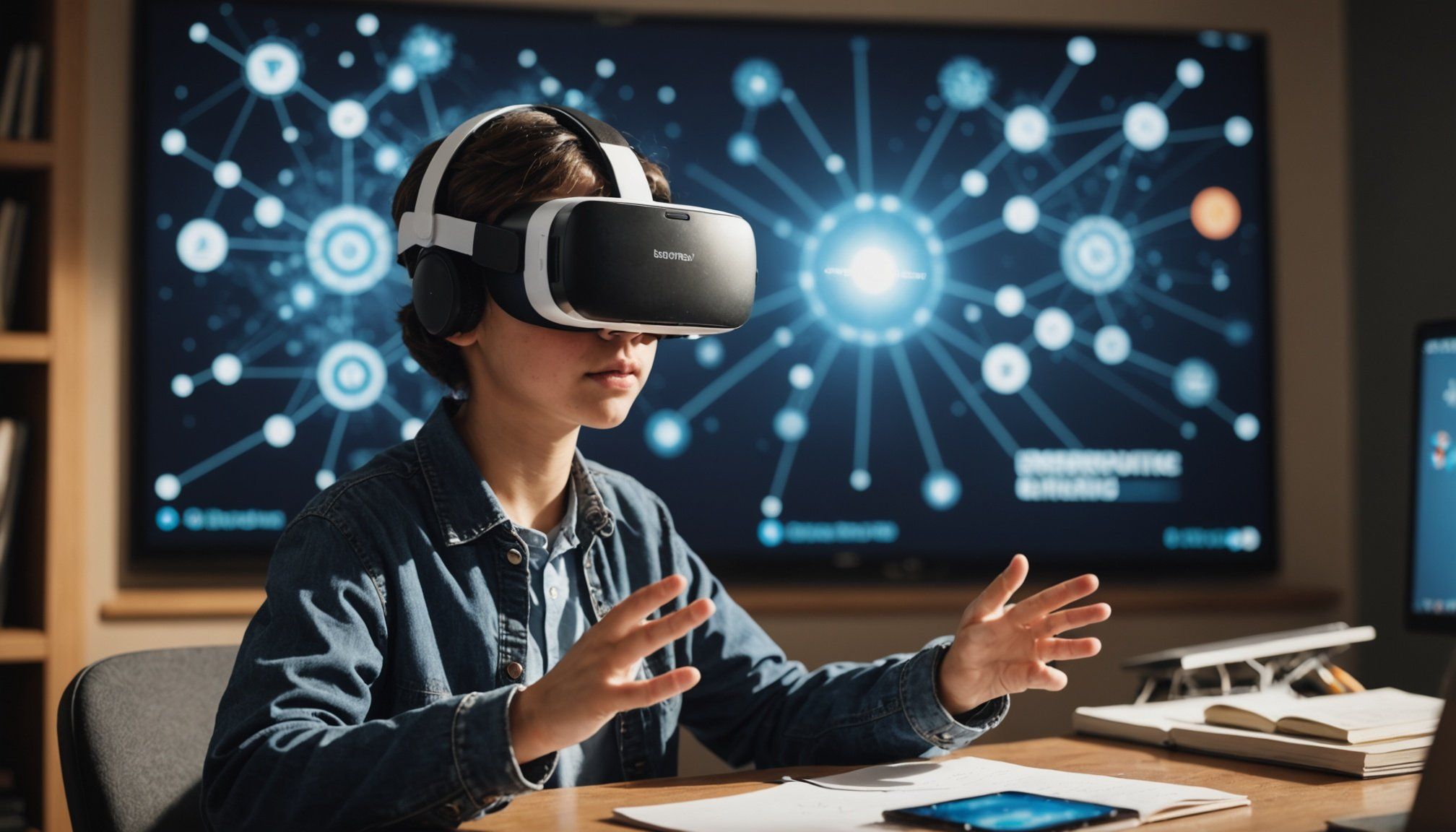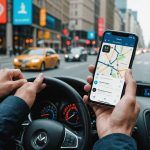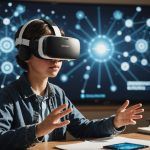Unlocking the Future of Education with Immersive VR: Essential Elements for Transformative Learning Journeys
The Power of Immersive Learning
In the ever-evolving landscape of education, one technology stands out for its potential to revolutionize the way we learn: Virtual Reality (VR). Immersive VR is not just a novelty; it is a powerful tool that can transform learning experiences, making them more engaging, interactive, and effective. Let’s delve into the essential elements that make VR a game-changer in education.
Enhancing Engagement and Motivation
Traditional lectures often struggle to capture students’ attention, leading to passive learning experiences. VR, however, immerses learners in the subject matter, making lessons exciting and interactive. Research indicates that VR significantly boosts student engagement, a critical factor in effective learning. For instance, studies by Merchant et al. (2014) and Di Serio et al. (2013) show that students exposed to VR learning environments exhibit higher levels of engagement and motivation compared to those in traditional classroom settings[1].
Also to discover : Conquering Challenges: Enhancing Space Simulation Games with Realistic Physics for an Immersive Gaming Experience
Hands-On Learning Without Risks
One of the most compelling aspects of VR in education is its ability to provide hands-on learning experiences without the risks associated with real-world practice. For subjects like chemistry, engineering, or even medical training, VR allows students to perform complex experiments and procedures in a safe and controlled environment.
Medical Training
VR enables medical students to practice surgeries in a risk-free environment, allowing them to hone their skills without the pressure of real-world consequences. For example, PrecisionOS’s VR solutions for surgeons enable medical professionals to practice procedures in life-like environments, improving both technical proficiency and decision-making under pressure[4].
Also to discover : Revolutionizing Space Exploration Games: Unlocking New Realities with Real-Time Ray Tracing Technology
Historical Lessons
Students can walk through ancient cities or witness pivotal historical moments, making history come alive in a way that textbooks cannot. This experiential approach fosters a deeper understanding and retention of historical concepts[2].
Complex Engineering Simulations
VR allows students to visualize and interact with 3D models of complex engineering designs, enabling them to understand and manipulate abstract ideas in a tangible way[2].
Bridging the Gap Between Theory and Practice
VR provides learners with practical, hands-on experiences that bridge the gap between theoretical concepts and real-world scenarios. This is particularly critical in technical fields where practical skills are essential.
Practical Skills Development
VR enables learners to practice skills such as piloting aircraft or mastering complex machinery without the physical risks or logistical constraints of real-world practice. This approach encourages critical thinking, collaboration, and problem-solving skills, which are essential competencies for success in the 21st century[2].
Catering to Different Learning Styles
VR accommodates diverse learning preferences, making it an inclusive tool for education. Whether a student learns best through visuals, touch, or exploration, VR provides an environment that caters to these different learning styles.
Visual and Kinesthetic Learners
VR is especially effective for visual and kinesthetic learners, allowing them to interact with and manipulate 3D models and environments. This interactive approach enhances retention and promotes a deeper understanding of concepts[3].
Increasing Retention Rates
Interactive and immersive experiences provided by VR significantly improve knowledge retention compared to passive learning methods.
Experiential Learning
Research shows that experiential learning through VR outperforms passive learning methods like lectures or videos. By addressing multiple senses and encouraging problem-solving, VR delivers a richer, more impactful educational experience[4].
Challenges and Limitations
While the benefits of VR in education are vast, there are several challenges and limitations that need to be addressed.
High Costs
High-quality VR headsets and software can be expensive, making it difficult for all schools to adopt the technology. This financial barrier is particularly significant for under-resourced educational institutions[1][3].
Accessibility Concerns
Not all students have access to the devices needed for VR, creating a potential digital divide. Ensuring equal access to VR technology is crucial for its widespread adoption[1][3].
Content Availability
Although VR content is growing, materials tailored to specific curriculums are still limited. Teachers often need to invest time in creating or sourcing VR content, which can be a significant challenge[3].
Technology Learning Curve
Both teachers and students may require training to effectively use VR tools. Addressing this learning curve is essential for maximizing the potential of VR in education[1][3].
Combining VR with AI for Enhanced Learning
The integration of VR with Artificial Intelligence (AI) can further enhance the learning experience, making it more personalized, adaptive, and effective.
Enhancing Atomic Search with VR
Imagine students entering a virtual library where every indexed piece of content is visually represented. Using VR, students can interact with AI-driven tools like a study assistant chatbot, navigating through 3D models, immersive simulations, or augmented lessons directly tied to indexed learning materials[2].
Making Assessments Interactive with VR
AI-powered assessment tools become even more impactful when combined with VR. Students can undertake assessments in lifelike environments where AI dynamically adjusts scenarios based on their real-time performance[2].
VR for AI-Enhanced Content Creation
AI-driven content creation can leverage VR to build immersive and engaging learning materials. AI can automate the development of VR scenarios, saving educators time and ensuring alignment with curriculum goals[2].
Practical Applications of VR in Education
VR has a wide range of practical applications across various educational contexts.
Virtual Field Trips
Virtual field trips powered by VR offer unprecedented accessibility, allowing students to explore far-off destinations regardless of physical, financial, or logistical barriers. For example, students can take virtual visits to the Louvre in Paris or explore ancient Rome without ever leaving the classroom[5].
Immersive Science Labs
VR brings complex science concepts to life by immersing students in interactive 3D environments. For instance, a VR simulation can shrink students down to the molecular level, enabling them to observe chemical reactions up close or explore the intricate structures of cells[5].
Language and Cultural Immersion
VR offers an immersive way for students to experience foreign languages and cultures. Students learning Spanish can visit a virtual language cafe in Madrid, ordering food and engaging in conversations with AI-powered native speakers. This realistic practice builds confidence and fluency in a safe, controlled environment[5].
Special Education Applications
VR has immense potential to support students with special needs by creating safe, controlled environments where they can practice essential life skills and social interactions. For example, VR simulations can allow students to practice job interviews in a realistic setting without the pressure of a real-world situation[5].
Overcoming Challenges and Realizing the Potential of VR
To fully realize the potential of VR in education, it is essential to address the challenges associated with its implementation.
Increased Research and Investment
Advocating for increased research, investment, and policy support is crucial for overcoming the barriers to VR adoption. This includes developing more affordable VR solutions, creating accessible content, and providing adequate training for educators[1].
Developing Best Practices
Future research should focus on understanding the long-term impacts of VR on learning outcomes and developing best practices for its integration in various educational contexts. This will help in creating immersive, interactive learning environments that prepare students to thrive in an increasingly digital world[1].
Virtual Reality is more than a technological trend; it is a transformative tool for education, training, and skill development. By offering immersive, cost-effective, and impactful learning experiences, VR is empowering organizations to train smarter and faster while achieving measurable results.
The Future of Education
As VR technology continues to advance and become more accessible, we can expect to see widespread adoption of VR in classrooms around the world. The future of education is exciting, and virtual reality will undoubtedly play a significant role in shaping the learning experiences of generations to come.
Table: Comparative Benefits of VR in Education
| Aspect | Traditional Learning | VR Learning |
|---|---|---|
| Engagement | Passive, often lacks interactivity | Highly engaging, interactive |
| Motivation | Can be low due to lack of interactivity | Significantly boosted |
| Hands-On Learning | Limited due to safety and cost concerns | Safe, risk-free environments |
| Retention Rates | Lower retention due to passive learning | Higher retention rates |
| Accessibility | Limited by physical and financial constraints | Accessible regardless of location or financial status |
| Learning Styles | May not cater to diverse learning styles | Accommodates visual, kinesthetic, and other learning styles |
| Cost | Can be high due to physical materials and travel | Long-term cost savings through reduced need for physical materials and travel |
| Content Availability | Limited by curriculum constraints | Growing content tailored to specific curriculums |
| Technology Learning Curve | Minimal training required | Requires training for effective use |
Detailed Bullet Point List: Key Benefits of VR in Education
- Enhanced Engagement and Motivation: VR captivates learners by immersing them in the subject matter, making lessons exciting and interactive.
- Hands-On Learning Without Risks: VR allows students to perform complex experiments and procedures in a safe and controlled environment.
- Bridging the Gap Between Theory and Practice: VR provides practical, hands-on experiences that bridge the gap between theoretical concepts and real-world scenarios.
- Catering to Different Learning Styles: VR accommodates diverse learning preferences, making it an inclusive tool for education.
- Increasing Retention Rates: Interactive and immersive experiences provided by VR significantly improve knowledge retention.
- Breaking Geographical Barriers: VR field trips offer unprecedented accessibility, allowing students to explore far-off destinations regardless of physical, financial, or logistical barriers.
- Special Education Applications: VR supports students with special needs by creating safe, controlled environments where they can practice essential life skills and social interactions.
- Combining with AI for Enhanced Learning: The integration of VR with AI makes the learning experience more personalized, adaptive, and effective.
Quotes from Experts
- “By leveraging these technologies, educators can create more engaging, personalized, and effective learning environments, ultimately enhancing educational outcomes and preparing students for the demands of the 21st century.”[1]
- “Virtual reality allows learners to explore realistic simulations that bring abstract concepts to life. This transforms passive observation into active participation, increasing emotional connection and engagement.”[2]
- “VR doesn’t just create immersive experiences—it can actually enhance brain function. By placing the user in realistic environments, VR ensures the brain processes the experience as though it’s real, strengthening the neural connections needed for learning and memory.”[4]
By embracing VR and addressing its challenges, educators can unlock a future where learning is not just about absorbing information but about experiencing it in a real, immersive, and transformative way. The potential of VR in education is vast, and as we continue to innovate and invest in this technology, we are not just enhancing learning experiences; we are shaping the future of education itself.











